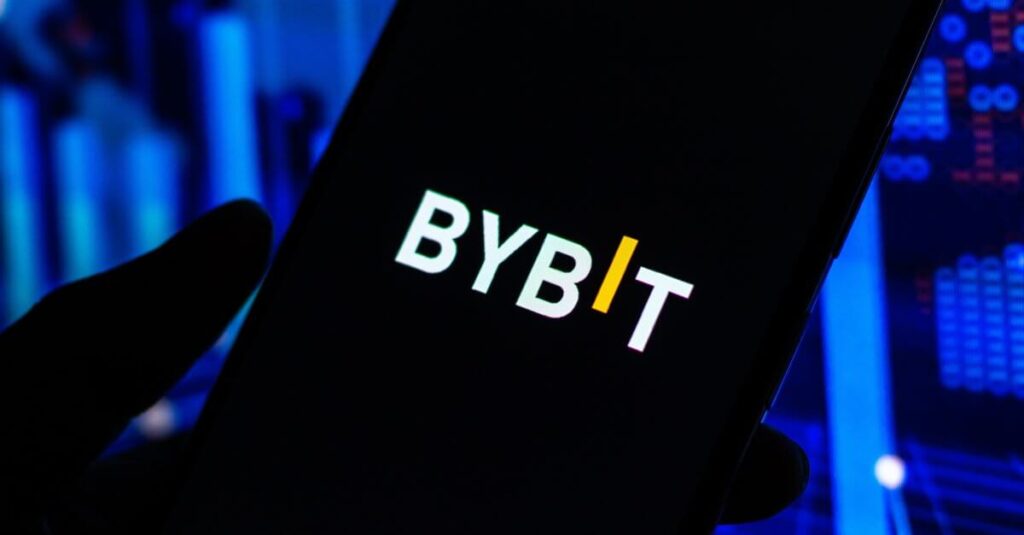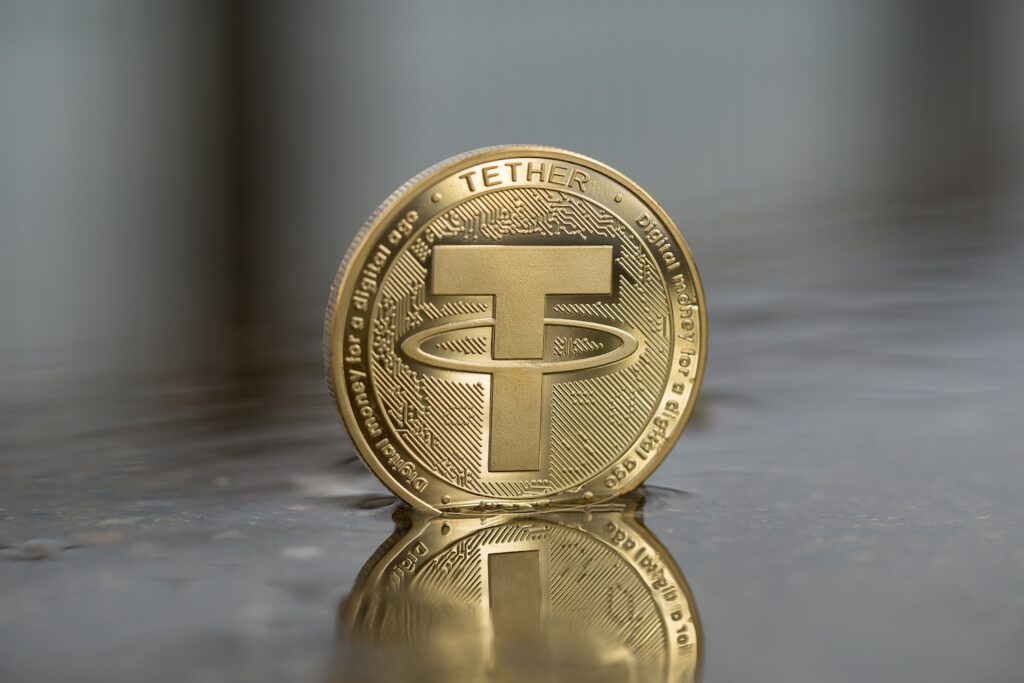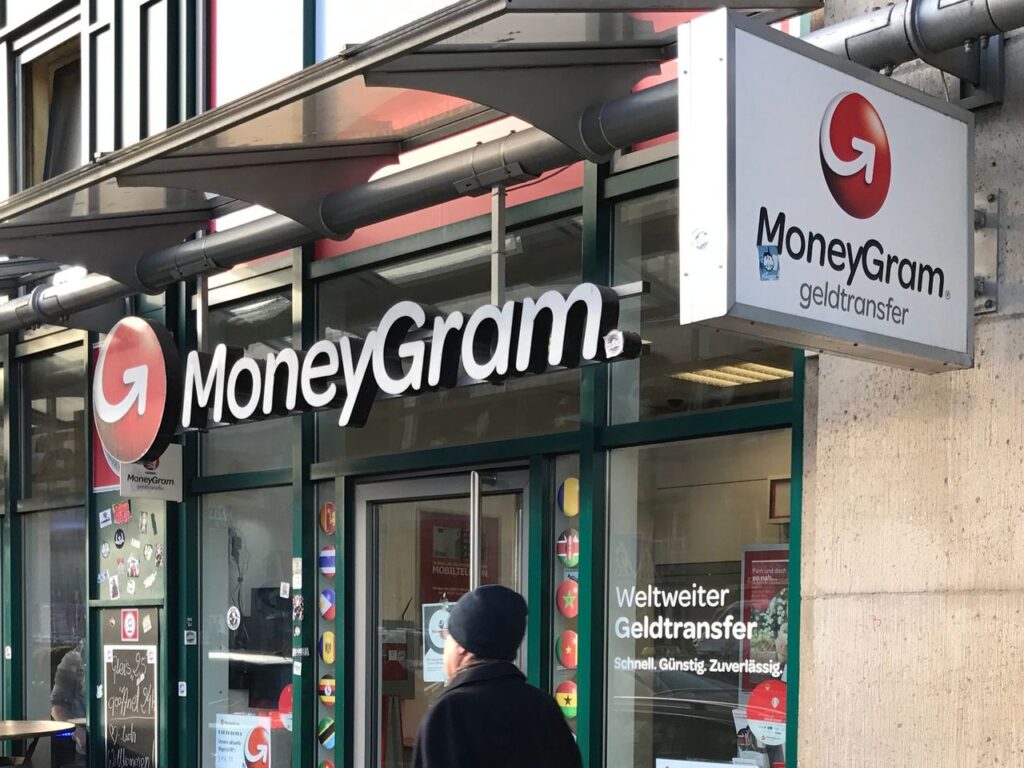A former Chinese government official, Xiao Yi, has received a life sentence for his involvement in illicit business activities linked to a substantial Bitcoin mining venture valued at 2.4 billion Chinese yuan (approximately $329 million).
This ruling was accompanied by additional convictions related to corruption charges. The Intermediate People’s Court of Hangzhou City pronounced the sentence on August 22.
Xiao Yi, a previous member of the Jiangxi Provincial Political Consultative Conference Party Group and vice chairman, was found guilty of corruption and abuse of power.
The corruption allegations primarily revolved around non-crypto matters, specifically bribery that spanned from 2008 to 2021.
In addition, abuse of power charges were based on actions taken between 2017 and 2021, where financial and electricity subsidies were provided to Jiumu Group Genesis Technology, a company located in Fuzhou.
Notably, this firm managed over 160,000 Bitcoin mining machines at one point.
Prosecutors argued that Yi orchestrated a concealment of the mining operation.
He allegedly directed various departments to falsify statistical reports and manipulate electricity consumption records.
During the period from 2017 to 2020, Jiumu Group Genesis Technology was responsible for 10% of Fuzhou’s total electricity usage.
The court noted that Xiao Yi admitted guilt, demonstrated remorse, returned embezzled funds, and all confiscated bribes and their profits were recovered.
READ MORE: FTX Founder Seeks Release for Defense Collaboration
China currently prohibits cryptocurrency transactions, exchange activities, and the conversion of fiat currency to crypto. However, complete ownership of cryptocurrencies has not been explicitly banned.
In a recent decision on August 3, a Chinese court invalidated a $10 million Bitcoin lending contract based on the country’s Bitcoin-related restrictions, precluding any legal recourse for debt recovery.
Additionally, on August 14, a Chinese citizen was sentenced to nine months in prison for aiding an associate in purchasing Tether, earning a $20 profit from the transaction.
In conclusion, Xiao Yi, a former Chinese government official, has been handed a life imprisonment sentence for his involvement in unauthorized business endeavors tied to a substantial Bitcoin mining venture and for corruption-related charges.
This verdict underscores China’s strict stance on cryptocurrency-related activities, while various legal actions continue to unfold in the country’s evolving regulatory landscape.
Other Stories:
Bybit Unveils NFT Collection as Part of Velocity Series
Global Disparities in Bitcoin Mining Costs Highlighted: From $208,560 in Italy to $266 in Lebanon
SEC Lawsuit Stifles XRP’s US Adoption Potential, Pro-XRP Advocate Asserts Amid Coinbase’s Moves
Former FTX CEO and co-founder, Sam “SBF” Bankman-Fried, has entered a plea of not guilty to charges of fraud and money laundering as stated in an updated indictment, reported recently.
The proceedings, presided over by Magistrate Judge Sarah Netburn, encompassed seven counts of fraud and money laundering, along with an added campaign finance charge.
Bankman-Fried asserted his innocence in regard to all allegations.
During the court session, SBF’s legal representatives raised concerns about his medical requirements.
They highlighted that SBF relies on Adderall and adheres to a vegan diet, both of which have not been met for the past 11 days. In response, the lawyers also requested that their client be provided with a vegan diet while in custody.
Furthermore, SBF’s counsel voiced apprehensions related to his ability to prepare adequately for the trial.
READ MORE: Crypto Industry Adapts to Bear Market
They noted that Bankman-Fried has been in remand since August 11 and expressed concern that they have only been presented with impractical solutions.
Bankman-Fried appeared before the Southern District of New York courthouse on August 22, facing allegations of using customer funds for personal gains and political contributions.
While the charges for fraud and money laundering date back to December, additional campaign finance charges were included by the prosecutors earlier in the month.
This series of developments follows the decision to revoke Bankman-Fried’s bail, leading to his departure from the New York courtroom in handcuffs.
Earlier in the week, SBF sought permission from the court to spend weekdays outside of detention in order to collaborate more effectively with his legal team on his defense.
A federal judge overseeing the criminal case granted him the ability to meet with his legal representatives outside of jail for approximately seven hours, allowing some flexibility in his preparations for the upcoming trial.
Other Stories:
Binance Contemplates Legal Action Against Former Payment Provider
Ripple Labs vs. SEC: Appeals Process Sparks Debate Over Ongoing Legal Case
Friend.tech, a new decentralized social (DeSo) network, has recently outshone giants like Uniswap and the Bitcoin network by generating over $1 million in fees within 24 hours on August 19.
Launched in beta version on August 11, the platform lets users tokenize social connections by buying and selling “shares” of them.
A person buying another’s share can privately communicate with them, with the platform charging a 5% transaction fee and the spread representing the owner’s profit.
Built on Coinbase’s layer-2 Base, Friend.tech has witnessed significant activity. Data from DefiLlama shows that the platform generated $1.12 million in 24-hour fees and $2.8 million since launch.
Thse total project rfevenue is $818,620, and the platform has recorded over 650,000 transactions with more than 60,000 unique traders.
The mind behind Friend.tech is believed to be the pseudonymous developer Racer, known for creating TweetDAO and Stealcam, both NFT-based social media networks.
With Friend.tech, Racer aims to empower crypto influencers with broad fan bases to earn trading fee royalties and help Web3 projects connect with venture capitalists and other crypto industry leaders.
READ MORE: Ripple Labs vs. SEC: Appeals Process Sparks Debate Over Ongoing Legal Case
The success of Friend.tech has sparked discussions and analyses regarding the platform’s revenue model, associated risks, and future prospects.
Ignas, a decentralized finance researcher, observed that the current business model relies solely on trading fees and not on increasing shareholders.
He also pointed out on X (formerly Twitter) that controversial personalities might exploit the system to earn more, even using fear, uncertainty, and doubt (FUD) as a strategy to generate fees.
Talk.Markets founder Lux Moreau has also highlighted the possibility of share prices increasing significantly as they are sold, which could encourage the formation of smaller or alternative groups within the platform.
In summary, Friend.tech has emerged as a promising player in the crypto ecosystem.
Its unique approach to tokenizing social connections and engaging influential crypto personas is generating considerable interest and activity.
However, the platform’s future depends on how it navigates potential risks and evolves its business model.
Other Stories:
Binance Contemplates Legal Action Against Former Payment Provider
Bybit, the third most frequented cryptocurrency exchange globally, has today unveiled the eagerly awaited NFT collection by Rik Oostenbroek as part of the Velocity Series. This series represents a unique Web3 collaboration, bringing together Bybit, Oracle Red Bull Racing, and elite digital artists.
On August 24, Rik Oostenbroek, the renowned Dutch artist, will debut two distinct NFT sets under the Velocity Series.
The first collection, titled “Momentum,” will be exclusively up for grabs by Velocity Pass NFT possessors through a Dutch auction.
This collection marks Rik’s inaugural journey into the sphere of 3D digital art, allowing technological data to shape the artwork’s end result.
The “Flow State” collection, comprising a capped set of 1000 NFTs, will be exclusively airdropped to the first 1000 Velocity Pass NFT owners.
To uphold its exclusiveness, no public sales will be held for this collection post-airdrop.
READ: Ripple Labs vs. SEC: Appeals Process Sparks Debate Over Ongoing Legal Case
The Velocity Pass is an esteemed NFT, offering art aficionados a golden ticket to four distinctive Bybit-sponsored NFT launches from the Velocity Series.
These launches align with the Grand Prix events in the Netherlands, Japan, the U.S., and Abu Dhabi. Additionally, pass bearers stand a chance to clinch rare rewards from Oracle Red Bull Racing and Bybit.
Rik Oostenbroek, the inaugural artist to partner for the Velocity Series, is celebrated for his dynamic designs, abstract manifestations, and carefully curated color schemes.
After creating visual masterpieces for iconic brands like Nike, Apple, and Paramount Pictures, Rik’s transition into the NFT space has been met with overwhelming praise for his captivating artistry.
Anndy Lian, Bybit’s Head of Partnerships, expressed, “This union of technology and artistry is aimed at paving a nexus for art enthusiasts, collectors, and motorsport fans. The Velocity Series masterfully blends the thrill of racing with the art of NFT, encapsulating the core of both domains.”
Caroline Buckland, leading the Fan Engagement at Oracle Red Bull Racing, added, “We’re thrilled about this inaugural and groundbreaking NFT collaboration within the Velocity Series. It’s a tribute to the fusion of art, innovation, racing exhilaration, and Rik’s unparalleled artistic vision.”
Cryptocurrency exchange Binance is contemplating taking legal action against its former payment provider, Checkout.com, according to a spokesperson for Binance on August 18.
The potential legal conflict stems from communications dispatched by Checkout.com to Binance on August 9 and August 11.
As reported by Forbes, Guillaume Pousaz, CEO of Checkout.com, terminated the partnership with Binance due to concerns regarding regulatory actions, Anti-Money Laundering (AML) measures, sanctions, and compliance controls within relevant jurisdictions.
A Binance representative responded via email, stating, “We do not agree with Checkout’s purported basis for termination and are considering our options for legal action.”
The spokesperson emphasized that on-ramp and off-ramp services on the exchange are unaffected by this dispute.
However, the discontinuation of the business relationship prompted Binance to close down Binance Connect on August 16.
Launched in March 2022, Binance Connect was a regulated platform facilitating crypto buy-and-sell operations.
The platform supported over 50 cryptocurrencies and fiat transactions, bridging the gap between crypto firms and the traditional financial system.
READ MORE: Former US President Donald Trump’s Ethereum Wallet Surges to $2.8 Million
At one point, Binance had been the largest customer of Checkout.com, processing around $2 billion in transactions in a single month in 2021.
Binance has encountered a series of setbacks in recent months, leading to its global branches struggling to secure partnerships.
In June, the exchange disclosed the discontinuation of support from its euro banking partner, Paysafe Payment Solutions, in Europe.
The Australian branch faced a sudden cutoff from the banking system in June.
Similarly, Binance.US confronted challenges in finding banking partners in the United States, with former collaborators Silvergate and Signature Bank facing closures during the banking crisis earlier this year.
The ongoing crisis has even prompted Binance CEO Changpeng Zhao to explore the possibility of purchasing a bank, as he revealed in an interview.
The legal and operational challenges faced by Binance do not seem to be abating.
On June 5, the U.S. Securities and Exchange Commission filed a lawsuit against the global exchange and its CEO, accusing them of violating securities laws and engaging in the unregistered offering of securities in the United States.
Other Stories:
Coinbase’s ‘Stand with Crypto Alliance’ Gains Momentum Amidst Lawmaker Engagement Push
Silvergate Bank Undergoes Executive Shake-Up Amid Crypto Transition and Legal Challenges
Stellar Development Foundation Invests in MoneyGram International
Stablecoin issuer Tether has revealed its decision to discontinue the Bitcoin Omni Layer version, citing waning user interest.
This particular iteration of Tether holds historical significance as one of the earliest stablecoins to be introduced.
Alongside the Bitcoin version, Tether also plans to halt operations for its Bitcoin Cash and Kusama versions, as communicated through an announcement on August 17.
Tether’s announcement clarified that moving forward, there will be no issuance of new Tether tokens on the Bitcoin Omni Layer, Bitcoin Cash, or Kusama platforms.
However, the redemption process will remain accessible for at least a year, and the company will provide updates before the end of that period regarding the procedure for redemptions beyond it.
The Bitcoin Omni Layer functions as a smart contract system situated atop the Bitcoin blockchain. Initially referred to as “Mastercoin,” this system was launched in July 2013, a full two years ahead of Ethereum.
Tether’s release on the Omni Layer in October 2014 marked a pivotal moment as it became the first stablecoin on this platform.
Over time, it ascended to become the leading stablecoin by market capitalization, surpassing predecessors such as BitUSD and NuBits.
READ MORE: Stellar Development Foundation Invests in MoneyGram International
In recognizing the historical role played by Omni Layer Tether, Tether’s August 17 statement expressed appreciation for the contributions and innovations of the team behind the platform.
This acknowledgment was balanced with the acknowledgement of challenges faced by the Omni Layer due to the lack of popular tokens and the availability of USDT on alternative blockchains.
These challenges prompted exchanges to opt for other transport layers over Omni, ultimately diminishing the usage of USDT Omni and compelling Tether to cease its issuance.
Tether did, however, leave the door open for the potential revival of the Omni Layer version should usage of the platform experience a resurgence.
Additionally, the company revealed that it is in the process of developing a new Bitcoin smart contract system named “RGB.”
Upon its completion, Tether intends to reintroduce the token in an RGB version, thereby re-establishing its presence on the Bitcoin blockchain.
As the stablecoin landscape intensifies in 2023, Tether faces increased competition to maintain its dominance.
The release of PayPal’s PYUSD on August 7 and Binance’s listing of FDUSD on July 26 have added to the mounting pressure on Tether’s standing.
Other Stories:
Silvergate Bank Undergoes Executive Shake-Up Amid Crypto Transition and Legal Challenges
Former US President Donald Trump’s Ethereum Wallet Surges to $2.8 Million
Coinbase’s ‘Stand with Crypto Alliance’ Gains Momentum Amidst Lawmaker Engagement Push
Bitcoin remained close to its lowest levels in two months at the opening of Wall Street on August 18th, as the market grappled with significant liquidations.
Data from Cointelegraph Markets Pro and TradingView indicated that BTC’s price movement was relatively stagnant, following an 8% loss triggered by a single daily candle.
The cryptocurrency market experienced a wave of liquidations across its derivatives sectors, with these dominating the scene while spot selling remained subdued.
Notably, trading firm QCP Capital highlighted a substantial short liquidation event on the Deribit exchange, hinting at a major account being wiped out.
Market observers, including QCP, noted that the reaction to a reported write-down of SpaceX’s $373 million Bitcoin holdings appeared to be overblown.
Recollections of past instances of market influence by Elon Musk, CEO of SpaceX and Tesla, resurfaced, leading some to hope that the market would not revisit such volatility.
The scale of liquidations seen rivaled those following the FTX exchange meltdown, which caused BTC/USD to plunge to $15,600 in November 2022.
The cryptocurrency’s price wavered around $26,000, sparking differing interpretations among market participants about the situation’s true nature and its future ramifications.
Noted trader and analyst Rekt Capital provided a grim outlook, pointing out a potential double-top formation for BTC/USD in 2023 and the lack of support from trend lines and moving averages during the downturn.
READ MORE: Former US President Donald Trump’s Ethereum Wallet Surges to $2.8 Million
Conversely, some market participants remained optimistic.
Trader CryptoCon identified two significant benchmarks that often precede successful price rebounds during bull market retracements: the relative strength index (RSI) bouncing at the 0.382 Fibonacci retracement level.
According to CryptoCon, this pattern repeated across multiple cycles.
Rekt Capital also highlighted the oversold condition of the daily RSI, a level unseen since June 2022, but reminiscent of bear market conditions.
Looking ahead, market focus turned to Jerome Powell’s forthcoming commentary, as the chair of the United States Federal Reserve’s speech at Jackson Hole was anticipated to hold the potential to introduce new volatility.
In summary, Bitcoin struggled near its two-month low on August 18th as the market grappled with significant liquidations across derivatives, despite relatively weak spot selling.
Traders offered differing perspectives on the situation, with some expressing concern over potential negative patterns, while others identified historical indicators of rebounds during bull market retracements.
The anticipation of Jerome Powell’s upcoming speech further added to the market’s uncertainty.
Other Stories:
Coinbase’s ‘Stand with Crypto Alliance’ Gains Momentum Amidst Lawmaker Engagement Push
Silvergate Bank Undergoes Executive Shake-Up Amid Crypto Transition and Legal Challenges
Coinbase’s ‘Stand with Crypto Alliance’ Gains Momentum Amidst Lawmaker Engagement Push
Silvergate Bank is undergoing significant changes as CEO Alan Lane and two other key executives prepare to step down from their roles, marking a departure from the institution’s previously crypto-friendly stance.
Lane, along with the chief legal officer John Bonino, is set to leave on August 15th, while Antonio Martino, the chief financial officer, will follow suit on September 30th.
In a recent filing to the Securities and Exchange Commission (SEC), Silvergate Capital, the bank’s parent company, confirmed that these departures align with their previously communicated strategy to wind down operations and initiate the voluntary liquidation of Silvergate Bank.
This transition also highlights the bank’s shift away from its previous position as a crypto-friendly establishment.
It’s important to note that the departing executives will not be entitled to additional compensation based on their employment agreements, but they will receive severance benefits in recognition of their service.
The departure of these executives is taking place amid a series of legal challenges that Silvergate Bank is currently facing.
The institution, as well as CEO Alan Lane, are implicated in various proposed lawsuits that center largely around their alleged involvement in the wrongdoings of the crypto exchange FTX.
One lawsuit, brought forth by the Texas-based Word of God Church, alleges that Silvergate Bank utilized $25 million from church deposits to participate in what they describe as FTX’s “fraudulent” activities.
The lawsuit further contends that both Silvergate and Alan Lane were well aware of the ongoing fraudulent activities and misconduct.
READ MORE: Zunami Protocol Issues Warning Amidst Attack on Stablecoin Pools on Curve Finance
Another class-action lawsuit claims that Silvergate Bank did not adequately conduct due diligence on the crypto firms it onboarded as clients, including prominent names like FTX, Alameda, and North Dimension.
The suit also mentions other notable customers such as Binance.US, Huobi Global, Nexo Capital, and Bittrex.
The bank’s decision to wind down its operations stems from the substantial losses it incurred, amounting to $1 billion, due to the collapse of FTX, one of its major clients.
This collapse had far-reaching implications, not only affecting the bank but also sending shockwaves through the cryptocurrency ecosystem and the broader US banking sector.
Kathleen Fraher, the chief transition officer of Silvergate Capital, is slated to take over the role of CEO Alan Lane, while Andrew Surry, the current chief accounting officer of the bank, is set to assume the responsibilities of departing CFO Antonio Martino.
These changes mark a pivotal moment in the evolution of Silvergate Bank and its role within the cryptocurrency landscape.
Other Stories:
Former FTX CEO Sam Bankman-Fried Detained in Notorious Brooklyn Jail
Pro-Bitcoin Politician Surges Ahead in Argentine Presidential Primaries
Pro-Bitcoin Politician Surges Ahead in Argentine Presidential Primaries
The Stellar Development Foundation (SDF) has taken on a minority investment role in MoneyGram International, a leading payments provider, as revealed in an announcement on August 15th.
Denelle Dixon, the CEO and Executive Director of the Stellar Development Foundation, expressed the decision to invest in MoneyGram as a straightforward one.
Dixon clarified in a corresponding blog post that the investment stemmed from SDF’s internal cash reserves, earmarked for supporting the foundation’s operations.
This funding source diverged from Stellar’s Enterprise Fund, typically utilized for backing startups and early-stage ventures.
Financial particulars of the investment were not disclosed by Dixon, but she did highlight that the SDF’s investment would secure them a position on MoneyGram’s board of directors.
The purpose of the investment, Dixon explained, is to bolster MoneyGram’s digital operations and explore the potential of blockchain technology.
This strategic move signifies MoneyGram’s dedication to embracing digital transformation and emerging as a frontrunner in fintech on a global scale.
The affiliation between Stellar Development Foundation and MoneyGram traces back to 2019, evolving into a more formalized partnership in 2021.
This investment marks the latest step in their collaboration.
READ MORE: Zunami Protocol Issues Warning Amidst Attack on Stablecoin Pools on Curve Finance
In a noteworthy development, MoneyGram facilitated the purchase, sale, and custody of cryptocurrencies through its mobile app for users based in the United States in November 2022.
In another recent initiative in July 2023, MoneyGram, in partnership with local bank Banesco, introduced a novel account deposit service targeted at consumers in Venezuela.
Despite this significant announcement, Stellar’s native token, Stellar XLM, exhibited a muted response, experiencing a 4.4% drop to $0.129 on the day of the announcement.
This information is according to Cointelegraph price data.
Stellar XLM had previously experienced an upswing following a legal victory for Ripple.
However, it has faced a subsequent 28% decline and remains notably lower, down by 85%, from its all-time high of $0.875, reached in January 2018.
Other Stories:
Voyager Digital’s Massive Token Transfers Spark Speculation of Impending Sell-Off
Pro-Bitcoin Politician Surges Ahead in Argentine Presidential Primaries
Former FTX CEO Sam Bankman-Fried Detained in Notorious Brooklyn Jail
The US Securities and Exchange Commission (SEC), the regulatory body responsible for approving spot cryptocurrency exchange-traded funds (ETFs), appears to be edging closer to granting permission for these investment vehicles after years of deliberation.
A significant development occurred when BlackRock, the world’s largest asset management firm, submitted its application for a Bitcoin ETF in June.
This move has reignited investor interest both within and beyond the cryptocurrency sphere.
Notably, BlackRock also established a “surveillance-sharing agreement” with Coinbase, a leading cryptocurrency exchange, possibly indicating the SEC’s receptiveness to ETF applications under such arrangements.
Numerous companies, including ARK Invest under the leadership of CEO Cathie Wood, have filed for crypto ETFs with the SEC. ARK 21Shares applied to list its spot Bitcoin ETF in May 2023.
However, the SEC recently extended the review period by 21 days until August 11, inviting public comments on the proposal as per its guidelines.
The SEC holds the authority to delay ETF applications for up to 240 days, a period that includes public input.
Nevertheless, the SEC has not yet approved any spot Bitcoin ETF proposal from any US firm. It only began accepting investment products linked to Bitcoin futures in October 2021.
READ MORE: Pro-Bitcoin Politician Surges Ahead in Argentine Presidential Primaries
The challenge lies in the nature of these investment vehicles: Bitcoin futures-linked ETFs allow investment without direct exchange participation, whereas spot Bitcoin ETFs involve holding the cryptocurrency directly within a fund.
Early attempts to gain SEC approval for crypto ETFs date back to 2013 when Gemini co-founders Cameron and Tyler Winklevoss applied for a Bitcoin Trust listing.
However, these attempts were rebuffed, showcasing the evolving regulatory landscape.
Stuart Barton, co-founder and CIO of Volatility Shares, the firm behind a leveraged Bitcoin futures ETF listing, revealed that the SEC application process involves negotiations and suggested that smaller firms might have an advantage in pursuing spot crypto ETFs.
Barton emphasized that significant companies have not substantially advanced the argument for ETF approval.
Prominent asset management firms like BlackRock, ARK Invest, Bitwise Asset Management, VanEck, WisdomTree, Invesco, Galaxy Digital, Fidelity, and Valkyrie currently have spot Bitcoin ETF applications under SEC review.
The SEC’s cautious stance might stem from the complex nature of the US crypto market, which requires further regulatory clarity and oversight.
The SEC’s ongoing enforcement actions against Coinbase, Binance, and Ripple, alongside penalties imposed on other firms, indicate a need for increased regulation.
US legislators are actively considering laws to define the roles of the SEC and Commodity Futures Trading Commission (CFTC) in overseeing digital assets.
Court decisions will likely play a role in shaping regulations, particularly following the SEC vs. Ripple case, where a judge determined that XRP was not a security.
Industry analysts suggest that the probability of a US spot Bitcoin ETF approval is around 65%, partly influenced by BlackRock’s application.
Speculation also abounds regarding potential simultaneous approvals to prevent any single company from gaining an advantage.
Other Stories:
Voyager Digital’s Massive Token Transfers Spark Speculation of Impending Sell-Off
Zunami Protocol Issues Warning Amidst Attack on Stablecoin Pools on Curve Finance
Former FTX CEO Sam Bankman-Fried Detained in Notorious Brooklyn Jail











